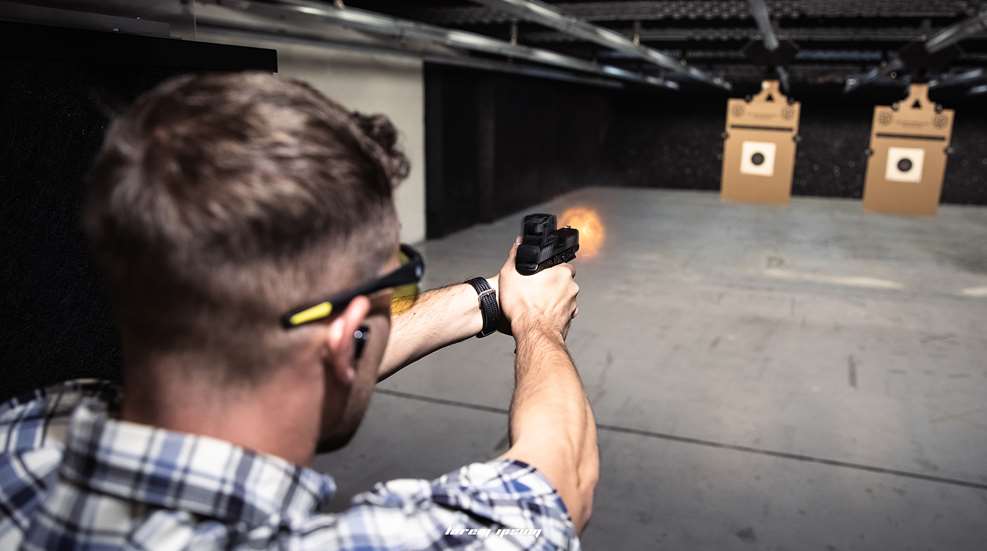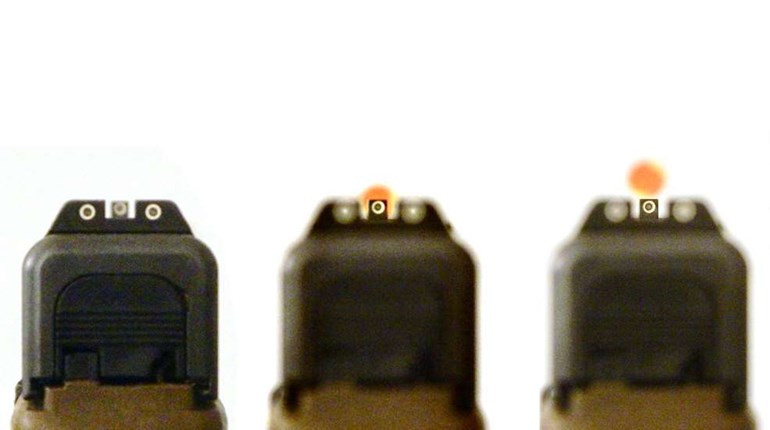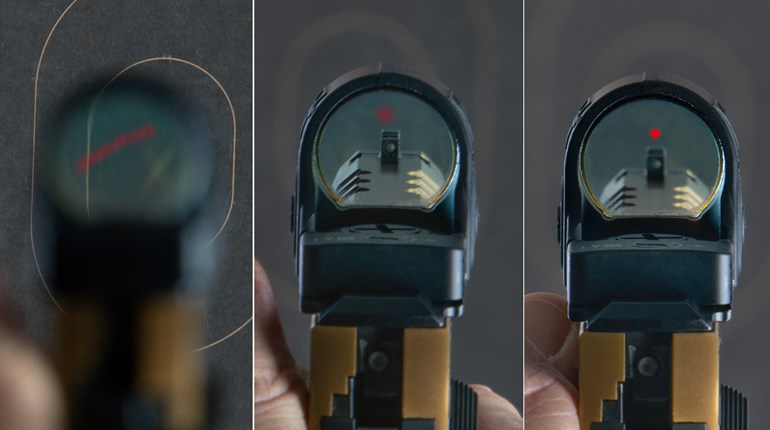
Whether for defensive or competitive application, who doesn’t want to be a faster and more accurate handgun shooter? Those who train diligently to become better shooters inevitably wrestle with attaining consistent recoil control.
Arguably one of the most challenging aspects of shooting well, recoil control presents a precipitous challenge regardless of skill level. The greater your control, the better your performance. Reaching for the holy grail of consistency can be challenging, but attainable given an appropriate and working understanding, gear acquisition and development of technique.
Recoil Control Is Managed Force Vectors
A paramount step to controlling anything is to first understand it. Wikipedia accurately defines recoil as “The rearward thrust generated when a gun is being discharged. In technical terms, recoil is a result of conservation of momentum, as according to Newton's third law the force required to accelerate something will evoke an equal but opposite reactional force, which means the forward momentum gained by the projectile and exhaust gases will be mathematically balanced out by an equal and opposite momentum exerted back upon the gun.”
Force, like displacement, velocity, and acceleration, is a vector quantity, which is why Newton’s Second Law states that the vector sum of the forces acting on an object is equal to its mass (a scalar) multiplied by its acceleration (a vector). In simplified terms, the same magnitude of energy blasted from the muzzle causes an equal magnitude of energy moving in the opposite direction (traveling through the gun toward the shooter.) Direction of this magnitude is technically referred to as a force vector.
Recoil force vectors are the result of a two-part mechanical process – propellant ignition (technically referred to as ‘deflagration’) and engagement of the recoil assembly spring.
The force vector generated by ignition occurs when the primer ignites the propellant. As the propellant chemicals burn, it rapidly generates a buildup of gas. The sudden, high pressure of the gas splits the bullet from the end of the cartridge, forcing it down the gun barrel at extremely high speeds generating a forward force vector.
The explosion also causes an equal magnitude of force (vector) moving in the opposite direction describing four impingements upon the shooter. They are straight back (kick), left and right (windage), and of course, muzzle lift (elevation). If you really want to get technical, barrel rifling causes an additional upper right-hand force vector because of centrifugal force.
Think of the rearward force vector as a fire hose of water coming straight at you while you’re trying to keep your muzzle from moving in the middle of that water jet. The force of the water jet disperses in such a manner as to impinge upon your muzzle position (hold) and its structural support (comprised of your grip, the stability of your wrist(s), elbows, shoulders, hips and overall balance-point of center mass).
The second half of recoil is engagement of the recoil spring assembly. It causes a reciprocating slide to recover forward to the barrel locked position and in the process generates a forward force vector again impinging upon your muzzle position and its structural support.
It is this impingement on both muzzle position and its structural support which warrants the control options of gear and technique.
Gear
Some shooters will attempt to gain greater recoil control by impacting that impingement via equipment modification solution. Such equipment modifiers can include, but are not limited to, reduced power recoil springs, reduced ammunition power factor, compensators. porting and various add-on devices such as the ‘gas pedal’ and others.
Purists argue that technique is paramount to equipment, but few will deny that these mechanical modifiers can and do influence force vectors and overall recoil control.
Referencing those carrying on the job, departmental or agency policy may restrict or even prohibit the usage of modification equipment on issued firearms and those utilized off duty. If you happen to be one of those shooters, don’t worry, there’s still another recoil-control option and that is to apply appropriate technique.
Technique
Notwithstanding equipment modification, the more commonly accepted approach regardless of agency or organization is appropriate recoil- control technique.
After aligning the muzzle with the target, your mission, should you choose to accept it, is to maintain muzzle-target orientation as best as possible before and after impingement. Easier said than done, as there’s a lot going on with both grip and the structural support behind that grip.
Referencing grip, some schools teach to cross over thumbs while others to keep your thumbs straight. Most schools advise to grip the gun aggressively and stay hard on that grip throughout the recoil process regardless of force magnitude. Some advocate lesser pressure with the strong hand and more with the support hand. Still others recommend fore and aft isometric tension while other recommend against it. The real answer is what works for your hand and gun size.
Once you’ve figured out how to best establish your signature grip, your next mission objective is to establish optimal structural support behind that grip to include all the links in the support chain: your wrists, elbows, shoulders and upper torso. Impingement upon that chain can result in the form of either impact (collision) or impulse (product force multiplied by the time that force acts). The more manageable of the two is impulse.
In further explanation, if there’s a break in the chain (weak wrists for example) impingement occurs in the form of impact where, per the law of energy conservation, energy will transfer back to your muzzle moving it out of alignment. If there is no break in the structural chain, energy transfer continues and eventually dissipates like a wave through the unbroken structural support of your body aka impulse. The shooter ultimately influences impingement resulting in impact or impulse via structural support integrity.
Mechanics Are the Key To Recoil Control
The mission objective of recoil control consistency can be attained by first understanding the mechanics, acquiring gear and/ or developing technique. However, minus personal commitment, discipline, and training regimen, recoil control consistency remains an elusive specter.





































